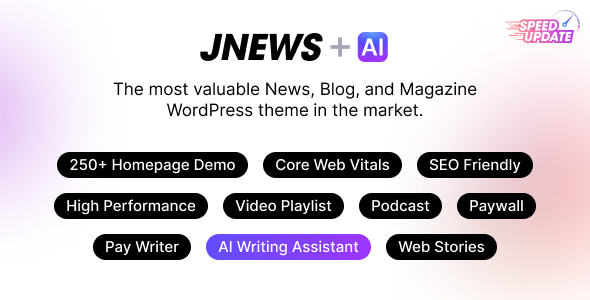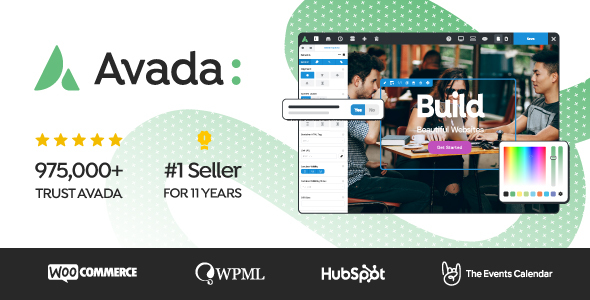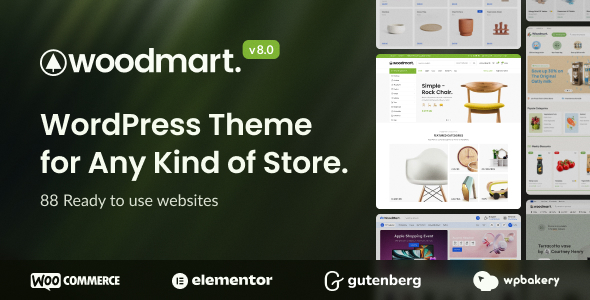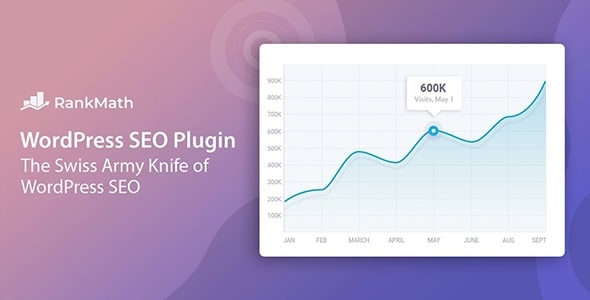WooCommerce Admin Custom Order Fields 1.17.2
- Updated
- Secure Payment
- Secure Payment
WooCommerce Admin Custom Order Fields: Turn your orders into your CRM
When we want the back office to work for us and not the other way around, WooCommerce Admin Custom Order Fields is the shortcut. With this extension, we transform the order screen into a custom dashboard, ready to capture exactly the data your operation needs.
In our day-to-day operations, this plugin has allowed us to add administrative detail fields to streamline processing and centralize order information in the same place where everything happens: the WooCommerce dashboard. In practice, WooCommerce Admin Custom Order Fields gives us structure, visibility, and control so each order moves smoothly.
What is and why use WooCommerce Admin Custom Order Fields
WooCommerce Admin Custom Order Fields is an extension that adds custom fields exclusively to the order management area. Unlike checkout editors, this one addresses internal operational information: managers, priorities, service dates, internal notes, and any other key variables for your workflow. In our case, we used WooCommerce Admin Custom Order Fields as the backbone of a small CRM: we assigned multiple case managers to a consulting account, set dates for training sessions, and recorded data that we then used to filter, sort, and make quick decisions.
Why choose WooCommerce Admin Custom Order Fields?
-
Because it reduces ping-pong between apps. If the data that drives the order needle lives in WooCommerce, your team doesn’t have to copy and paste to another system.
-
Because it scales: we start with a couple of courses and, as the process matures, we add more without retraining the team.
-
Because it enables reporting: what you capture, you can filter and bring into your BI. Ultimately, WooCommerce Admin Custom Order Fields turns each order into a rich, actionable record that speeds up logistics, service, and support.
Key benefits for your operation (filters, visibility and control)
With WooCommerce Admin Custom Order Fields we gain three operational superpowers:
-
CentralizationAll critical information is saved alongside the order. In our workflow, training session dates and consultant assignments reside in internal fields that we instantly see in the order list.
-
PriorizationWith fields like “internal status,” “SLA,” or “urgency,” we categorize what to address first. This is where WooCommerce Admin Custom Order Fields shines, allowing you to sort columns and create saved views by team.
-
TraceabilityEach update is included in the order. If someone takes the case, they leave their name/role marked; if we reschedule, we adjust the date without chasing email threads.
Additionally, WooCommerce Admin Custom Order Fields helps reduce human error: by standardizing options with selects and radios, we limit creativity where it doesn’t belong. And because information doesn’t depend on “who knows it,” the handoff between agents is more fluid. In our case, we noticed that the friction of “who’s handling this customer?” disappears when everyone looks at the same fields in the same place.
Real-life use cases: training, consulting, and services
We rely on WooCommerce Admin Custom Order Fields for three typical scenarios:
-
TrainingWe added a “Session Date” field (date type) and a “Modality” field (select: online/in-person). This allowed us to schedule and prioritize orders based on availability. When we tested this approach, coordinating the calendar became trivial.
-
TechnologyWe created “Case Manager (Multi)” to target more than one assignee and “Internal Status” (e.g., Analysis, In Progress, Waiting for Customer). With WooCommerce Admin Custom Order Fields, assigning multiple case managers becomes a process rather than a hack.
-
Recurring services: We use “Expected Renewal” (date) and “Contracted Package” (select). This facilitates internal alerts and proactive follow-up.
Other common uses include B2B delivery with time windows, document verification, installation notes, project references, access permissions, purchase order numbers, and any operational details that should never be in the public checkout, but should be in the back office. Again, WooCommerce Admin Custom Order Fields gives us the perfect canvas to paint the process we need.
How we implemented it in your store (step by step without friction)
-
Flow discovery: We map your current process and define what data is missing at each stage.
-
Field design: We propose a minimum viable list (3–7 fields) and their type (text, select, checkbox, date).
-
Setting up WooCommerce Admin Custom Order Fields: We create the fields, define visibility and order, and activate their display as columns in the order list.
-
Testing with real orders: We generate sandbox orders, we validate that the team finds the data without thinking.
-
Express adjustments and training: With 15–30 minutes of induction, your team is already operating with the new fields.
-
climbed: We measure which fields are used, which ones are unnecessary, and which automations are worth activating.
A little tip that works for us: start simple. With WooCommerce Admin Custom Order Fields, we resisted the temptation to create 20 fields on day one; we prefer to speed up adoption and add complexity when the team requests it.
Best practices: nomenclature, permissions, and performance
-
Consistent names: Prefixes like “OPS — ” or “CRM — ” provide visual grouping. E.g., “OPS — Priority,” “CRM — Case Manager.”
-
Suitable types: date for commitments, select for statuses, short text for free data. Less is more.
-
Permits and order: Display key columns in the order list and hide non-core ones. If your operation grows, separate views by role (service, operations, billing).
-
validations: Use closed options for things that affect the flow; leave free text only where it provides context.
-
Unlimited– Avoid dozens of fields visible at once. With WooCommerce Admin Custom Order Fields, we prefer 6–8 useful columns and the rest within the order.
In our experience, standardizing names reduces uncertainty and speeds up onboarding. And when the fields “rule,” the process becomes predictable. Another tip: document on an internal page what each value means. That way, “Internal Status: In Progress” doesn’t mean different things to different people.
Display data to the client without losing control of the back office
There are times when it’s appropriate to display certain data to the client (for example, “Session Date” or “WO Number”) in “My Account” or notifications. With WooCommerce Admin Custom Order Fields, we define which fields are internal and which can be displayed in emails or in the client area. Our rule is simple: everything that affects customer expectations must be visible and clear; tactical or internal information (priorities, SLAs, notes) remains in the back office. This balance allows us to leverage WooCommerce as a complete customer relationship management system without sacrificing operational efficiency.
Export and reporting: from order to your BI without pain
Capturing is only half the game; the other half is exploiting the data. With WooCommerce Admin Custom Order Fields, we typically:
-
Export orders with custom columns for weekly audits.
-
Create views by responsible person or by internal status for operational meetings.
-
Cross-reference data with billing or with support (for example, “which internal states generate the most rework?”).
If you’re already using a dashboard (Sheets, Data Studio, Power BI), WooCommerce Admin Custom Order Fields will give you new insights to understand bottlenecks and plan capacity.
Common mistakes and how to solve them (checklist)
-
Fields that no one fills outThe problem isn’t the plugin; it’s the design. We’ve pared down the set and made it mandatory where it matters.
-
Too many optionsIf your select has 15 values, people stop. We redesigned it to 5–7 actionable options.
-
Infinite columnsIf the order list is a wall of text, the benefit is lost. We only show the key points and leave the rest in the details.
-
Duplicity with external CRM: We decide the “source of truth.” If WooCommerce Admin Custom Order Fields is the source, the CRM consumes; otherwise, we reverse the flow.
-
Confusing roles: We define who creates, who edits, and who only consults. Once this is established, friction plummets.
Conclusion
If your goal is to process orders faster and with fewer errors, WooCommerce Admin Custom Order Fields is the missing piece. It allows us to use WooCommerce as a practical CRM: we capture what matters, see it where we work, and turn it into decisions. Want your team to stop chasing information and start moving orders? Let’s do a light implementation, test with real-world cases, and scale based on results.
-
$79.00 Original price was: $79.00.$4.99Current price is: $4.99.
- Lifetime Updates And Support
- Unlimited Website Usage
- This item is licensed 100% GPL
- Money-back Guarantee
Get in Subscription – Unlimited Downloads for $14.99/mo
- 5000+ Items
- Unlimited Usage
- Support
Frequently asked question
How many sites can I use the products on?
You can use any product from our store on any website you want.
Will I get updates?
Of course. If you buy an individual product, you’ll get lifetime updates for that purchase.
On the other hand, if you purchase a membership, you will receive updates until your membership expires.
Are the products authentic?
Yes, each product is original. The difference with the author is that we distribute under the GNU GPL v2/3 regulations/license, so we don’t provide additional services from the author, such as customizations, etc. We also don’t provide license keys, and in the case of products that require one to work, we pre-activate them so they don’t require anything and you can use them seamlessly on any website you want.
Do you provide technical support?
Yes, and regarding time, it is usually on average within 24 to 48 business hours.
Now, there are times when, in less than a day, we have already provided an answer and a solution, depending on the case.
Are there download limits?
No. We don’t believe in that format, so you can download as many times as you want. No problem. We pay for high-quality professional storage just to avoid any issues.
Do you provide license keys?
No. It’s not feasible, since we’ve already experienced keys flying everywhere, and we could lose the corresponding accounts.
That said, while all products are original, in the case of products that require a license key to operate, we will take care of pre-activating them.
Refund if product unusable?
We’re here to make sure you’re 100% satisfied with your experience. Our Customer Support Team will do everything possible to ensure you’re comfortable with placing an order and happy with the products you download. But we also know sometimes things happen.
Due to the nature of digital media means that once you have downloaded a plugin or theme there’s really no way to ‘return’ it. No refunds will be given except in the case when the digital product is completely unusable.
If the digital product is unusable, we need time to try to fix it. Otherwise, we will make a refund.
Our support team is available 24/7, if you have any question or need help in installing or configuring digital products purchased on the website, please don’t hesitate to CONTACT US.
Please note that we are not developers of the provided products, so our technical support capabilities are limited.
We do not change product functionality and do not fix developer bugs.
In case you are accepted to get refund, payment refunds are processed within 5-7 business days. All refunds are issued to the original payments. It may take up to 5 days for your refund to be reflected in your PayPal account or bank statement. If you paid using a credit or debit card, the money will be refunded to your card. Depending on your card issuer, it can take up to 30 days for the refund to appear on your card statement.
IMPORTANT! Please CONTACT US first so we can handle your issues. If you arbitrarily open a dispute without contacting us first, your account may be suspended immediately without notice.
WooCommerce Admin Custom Order Fields: Turn your orders into your CRM
When we want the back office to work for us and not the other way around, WooCommerce Admin Custom Order Fields is the shortcut. With this extension, we transform the order screen into a custom dashboard, ready to capture exactly the data your operation needs.
In our day-to-day operations, this plugin has allowed us to add administrative detail fields to streamline processing and centralize order information in the same place where everything happens: the WooCommerce dashboard. In practice, WooCommerce Admin Custom Order Fields gives us structure, visibility, and control so each order moves smoothly.
What is and why use WooCommerce Admin Custom Order Fields
WooCommerce Admin Custom Order Fields is an extension that adds custom fields exclusively to the order management area. Unlike checkout editors, this one addresses internal operational information: managers, priorities, service dates, internal notes, and any other key variables for your workflow. In our case, we used WooCommerce Admin Custom Order Fields as the backbone of a small CRM: we assigned multiple case managers to a consulting account, set dates for training sessions, and recorded data that we then used to filter, sort, and make quick decisions.
Why choose WooCommerce Admin Custom Order Fields?
-
Because it reduces ping-pong between apps. If the data that drives the order needle lives in WooCommerce, your team doesn’t have to copy and paste to another system.
-
Because it scales: we start with a couple of courses and, as the process matures, we add more without retraining the team.
-
Because it enables reporting: what you capture, you can filter and bring into your BI. Ultimately, WooCommerce Admin Custom Order Fields turns each order into a rich, actionable record that speeds up logistics, service, and support.
Key benefits for your operation (filters, visibility and control)
With WooCommerce Admin Custom Order Fields we gain three operational superpowers:
-
CentralizationAll critical information is saved alongside the order. In our workflow, training session dates and consultant assignments reside in internal fields that we instantly see in the order list.
-
PriorizationWith fields like “internal status,” “SLA,” or “urgency,” we categorize what to address first. This is where WooCommerce Admin Custom Order Fields shines, allowing you to sort columns and create saved views by team.
-
TraceabilityEach update is included in the order. If someone takes the case, they leave their name/role marked; if we reschedule, we adjust the date without chasing email threads.
Additionally, WooCommerce Admin Custom Order Fields helps reduce human error: by standardizing options with selects and radios, we limit creativity where it doesn’t belong. And because information doesn’t depend on “who knows it,” the handoff between agents is more fluid. In our case, we noticed that the friction of “who’s handling this customer?” disappears when everyone looks at the same fields in the same place.
Real-life use cases: training, consulting, and services
We rely on WooCommerce Admin Custom Order Fields for three typical scenarios:
-
TrainingWe added a “Session Date” field (date type) and a “Modality” field (select: online/in-person). This allowed us to schedule and prioritize orders based on availability. When we tested this approach, coordinating the calendar became trivial.
-
TechnologyWe created “Case Manager (Multi)” to target more than one assignee and “Internal Status” (e.g., Analysis, In Progress, Waiting for Customer). With WooCommerce Admin Custom Order Fields, assigning multiple case managers becomes a process rather than a hack.
-
Recurring services: We use “Expected Renewal” (date) and “Contracted Package” (select). This facilitates internal alerts and proactive follow-up.
Other common uses include B2B delivery with time windows, document verification, installation notes, project references, access permissions, purchase order numbers, and any operational details that should never be in the public checkout, but should be in the back office. Again, WooCommerce Admin Custom Order Fields gives us the perfect canvas to paint the process we need.
How we implemented it in your store (step by step without friction)
-
Flow discovery: We map your current process and define what data is missing at each stage.
-
Field design: We propose a minimum viable list (3–7 fields) and their type (text, select, checkbox, date).
-
Setting up WooCommerce Admin Custom Order Fields: We create the fields, define visibility and order, and activate their display as columns in the order list.
-
Testing with real orders: We generate sandbox orders, we validate that the team finds the data without thinking.
-
Express adjustments and training: With 15–30 minutes of induction, your team is already operating with the new fields.
-
climbed: We measure which fields are used, which ones are unnecessary, and which automations are worth activating.
A little tip that works for us: start simple. With WooCommerce Admin Custom Order Fields, we resisted the temptation to create 20 fields on day one; we prefer to speed up adoption and add complexity when the team requests it.
Best practices: nomenclature, permissions, and performance
-
Consistent names: Prefixes like “OPS — ” or “CRM — ” provide visual grouping. E.g., “OPS — Priority,” “CRM — Case Manager.”
-
Suitable types: date for commitments, select for statuses, short text for free data. Less is more.
-
Permits and order: Display key columns in the order list and hide non-core ones. If your operation grows, separate views by role (service, operations, billing).
-
validations: Use closed options for things that affect the flow; leave free text only where it provides context.
-
Unlimited– Avoid dozens of fields visible at once. With WooCommerce Admin Custom Order Fields, we prefer 6–8 useful columns and the rest within the order.
In our experience, standardizing names reduces uncertainty and speeds up onboarding. And when the fields “rule,” the process becomes predictable. Another tip: document on an internal page what each value means. That way, “Internal Status: In Progress” doesn’t mean different things to different people.
Display data to the client without losing control of the back office
There are times when it’s appropriate to display certain data to the client (for example, “Session Date” or “WO Number”) in “My Account” or notifications. With WooCommerce Admin Custom Order Fields, we define which fields are internal and which can be displayed in emails or in the client area. Our rule is simple: everything that affects customer expectations must be visible and clear; tactical or internal information (priorities, SLAs, notes) remains in the back office. This balance allows us to leverage WooCommerce as a complete customer relationship management system without sacrificing operational efficiency.
Export and reporting: from order to your BI without pain
Capturing is only half the game; the other half is exploiting the data. With WooCommerce Admin Custom Order Fields, we typically:
-
Export orders with custom columns for weekly audits.
-
Create views by responsible person or by internal status for operational meetings.
-
Cross-reference data with billing or with support (for example, “which internal states generate the most rework?”).
If you’re already using a dashboard (Sheets, Data Studio, Power BI), WooCommerce Admin Custom Order Fields will give you new insights to understand bottlenecks and plan capacity.
Common mistakes and how to solve them (checklist)
-
Fields that no one fills outThe problem isn’t the plugin; it’s the design. We’ve pared down the set and made it mandatory where it matters.
-
Too many optionsIf your select has 15 values, people stop. We redesigned it to 5–7 actionable options.
-
Infinite columnsIf the order list is a wall of text, the benefit is lost. We only show the key points and leave the rest in the details.
-
Duplicity with external CRM: We decide the “source of truth.” If WooCommerce Admin Custom Order Fields is the source, the CRM consumes; otherwise, we reverse the flow.
-
Confusing roles: We define who creates, who edits, and who only consults. Once this is established, friction plummets.
Conclusion
If your goal is to process orders faster and with fewer errors, WooCommerce Admin Custom Order Fields is the missing piece. It allows us to use WooCommerce as a practical CRM: we capture what matters, see it where we work, and turn it into decisions. Want your team to stop chasing information and start moving orders? Let’s do a light implementation, test with real-world cases, and scale based on results.
-
You must be logged in to post a review.


















Reviews
There are no reviews yet.